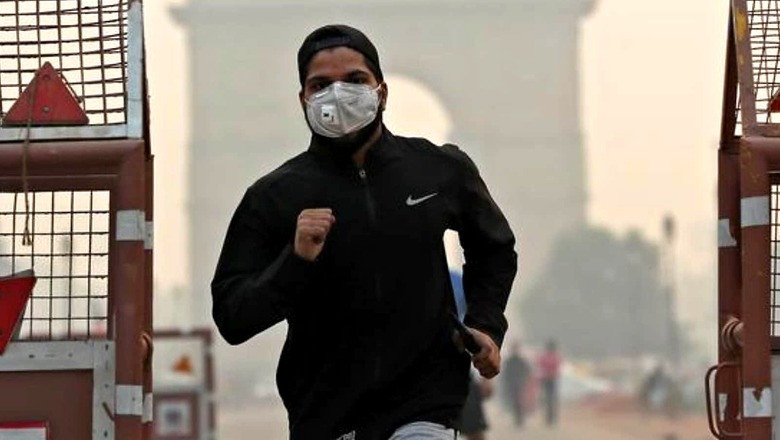
views
Reduction in economic activities during the pandemic-related lockdown had resulted in decrease in air pollution in most parts of India, but satellite observations show that parts of central-western and northern India recorded an increase in pollution in contrast to the general trend, the government said on Monday quoting a study. Scientists at the Aryabhatta Research Institute of Observational Sciences (ARIES), an autonomous institute under the Department of Science and Technology, utilised the EUMETSAT and NASA satellite observations for the year 2018, 2019, and 2020, and investigated the influence of significant cutoff of activities on the changes in distribution of ozone, carbon monoxide and nitrogen di-oxide during the lockdown period.
According to the study, published in the ’Environmental Science and Pollution Research’, ozone, carbon monoxide and NO2 showed an increase of about 15 per cent over the central-western part of India. According to the results, carbon monoxide showed a consistent increase (as high as 31 per cent) of concentration at higher heights during the lockdown.
The study was led by Prajjwal Rawat, a senior research fellow at ARIES Nainital, along with his research supervisor Dr. Manish Naja. In a statement, the Science and Technology Ministry said scientists have identified that regions in the central-western part of India and north India are prone to higher air pollution exposure based on state-of-the-art satellite observations and hence are exposed to greater risk of respiratory problems.
”In 2020, a complete nationwide lockdown was imposed over India to impede the spread of coronavirus disease. This enormously disrupted the economy with a single positive side effect, a short-term improvement in the air quality near the surface,” the ministry said. The satellite-based observation of toxic trace gases — ozone, NO2 and carbon monoxide — near the surface and in the free troposphere mostly showed reduction of the pollutants over India, it said.
However, over some regions like western-central India, some parts of northern India, and Remote Himalaya, an increase of ozone and other toxic gases was observed. This could have aggravated respiratory health risks around those regions during the pandemic, the ministry said. The long-range transport and downward transport from the stratosphere significantly increased ozone concentrations over north India during the lockdown, and remote regions like the Himalayas and coastal cities showed the bare minimum influence of lockdown in air quality, with a tendency to increase in criteria air pollutants, the study said.
According to the ARIES team, this study helped to identify the regions prone to higher air pollution exposure hence can identify areas at a greater health risk. The team previously, with scientists from the ISRO, showed INSAT-3D as a valuable Indian geostationary satellite to study ozone pollutants over India. However, for other criteria air pollutants such as NO2, SO2 and CO, India is lacking in space-based observations and need air quality monitoring indigenous satellite in orbit.
Read all the Latest India News here
















Comments
0 comment